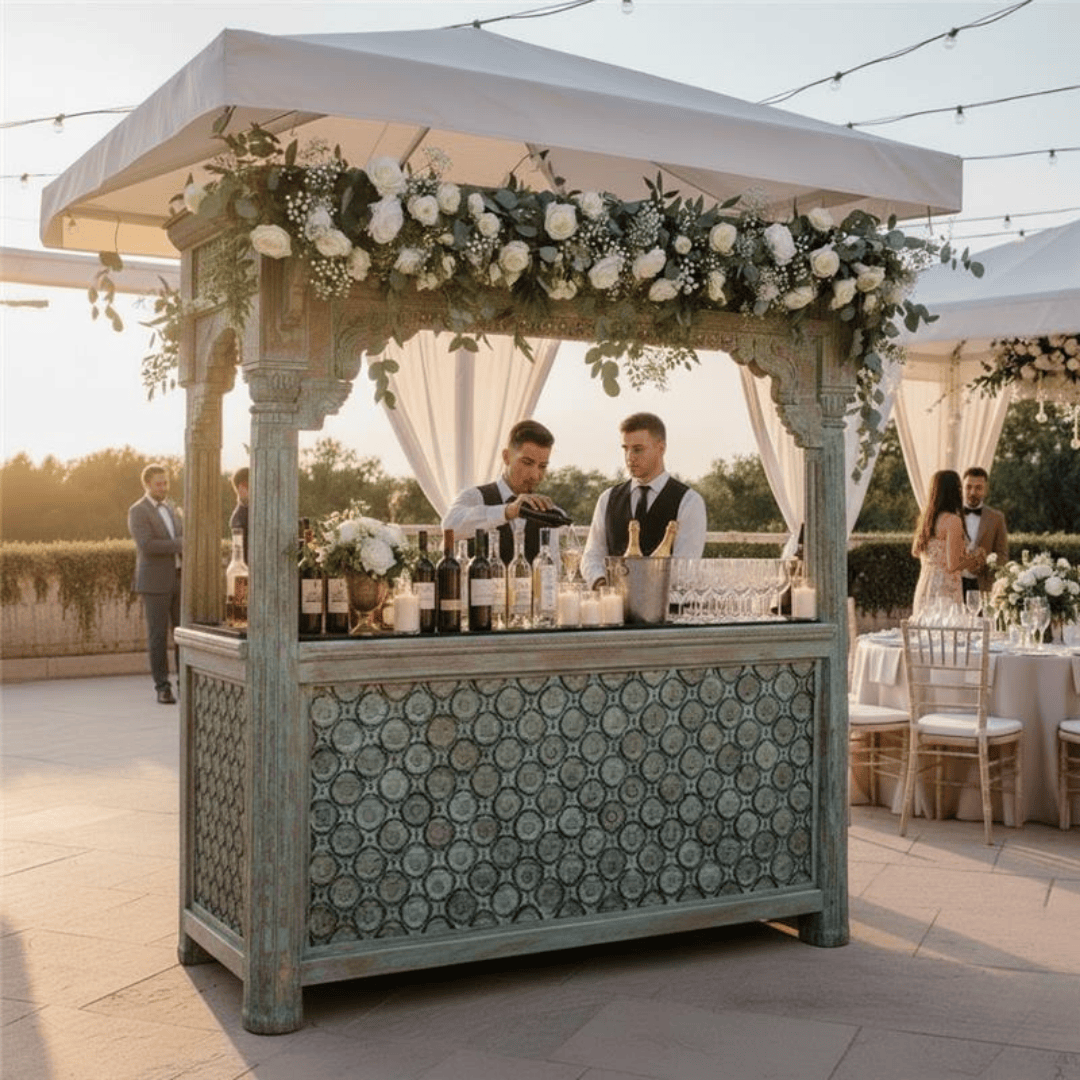
Price
Materials
Period
Place of origin
SKU
Dimensions
Available Stock: 1
About the product
Antique Reclaimed Teak and Mango Wood Drinks Bar Cabinet
Naqashi Carvings | Distressed Blue Finish | Handmade in Rajasthan, India
A Masterpiece of Artisanal Craft and Architectural Presence
This remarkable bar cabinet, handcrafted in Rajasthan from reclaimed teak and mango wood, brings together heritage artistry and contemporary function. Once part of a grand architectural façade, it has been reimagined as a functional drinks bar while retaining the historical integrity and patina of its original structure.
The hand-finished blue surface carries the marks of time and the touch of craftsmanship, with layers of turquoise, indigo, and natural wood tones blending into a weathered harmony. The result is a statement piece that transforms utility into sculpture, merging history, design, and cultural storytelling.
Sculptural Elegance and Naqashi Detailing
The lower section features intricately hand-carved Naqashi panels with repeating rosette latticework, each motif symbolising prosperity and rhythm. The canopy above is adorned with pierced floral tracery, scalloped edging and bracketed supports reminiscent of haveli entrances and Mughal architecture. Together, these elements create a visual dialogue between structural form and ornamental refinement.
Key Features
Authentic Craftsmanship: Constructed from reclaimed teak and mango wood, preserving natural texture and grain.
Naqashi Carving: Hand-carved floral and geometric motifs inspired by Mughal and Rajput architecture.
Distressed Finish: Multi-layered blue patina revealing natural wood beneath.
Functional Interior: Fitted shelves and racks for bottles, glassware, and accessories.
Eco-Sustainable: Upcycled from architectural salvage for conscious living.
Commanding Scale: Nearly 2 metres wide and over 2 metres tall, creating an immediate focal point.
Cultural and Historical Context
Naqashi carving is one of Rajasthan’s most intricate art forms, historically reserved for palatial doors, temple panels, and Mughal-era facades. Its symmetrical geometry and floral symbolism express harmony and continuity. This cabinet preserves that legacy through modern reuse, allowing historic craft to live within contemporary interiors. The fusion of reclaimed wood and traditional carving demonstrates how sustainability and cultural preservation can coexist in design.
Styling Inspiration
Use this cabinet as a statement bar or decorative installation in a living room, boutique lounge, or hospitality setting. Pair it with antique brass fixtures, soft ambient lighting, and textured rugs to emphasise its patina and architectural form. Its presence complements both heritage and modern interiors, serving equally as a bar, console, or reception counter.
Specifications
Material: Reclaimed Teak and Mango Wood
Finish: Distressed Blue with Natural Patina
Origin: Rajasthan, India
Era: Upcycled Modern Creation with Traditional Methods
Dimensions: Width 193 cm × Height 220 cm × Depth 80 cm
Weight: Approx. 176 kg
Delivery and Collection
This piece qualifies for specialist white-glove delivery across the UK. Collection by appointment is also available. Regen Bespoke offers tailored delivery and installation solutions for heritage furniture.
Exclusively at Regen Bespoke
Where sustainable craftsmanship meets heritage design and every detail tells a story.






